
hotline£º
17715390137
Tel/Wechat£º
18101240246 (Technology)
0512-68565571
Email£ºmxenes@163.com £¨Sales Engineer£©bkxc.bonnie@gmail.com
Scan the code to follow or search the official account on WeChat:
2D Materials Fronrier After paying attention,
click on the lower right corner to contact us,
Enter enterprise WeChat.
Professional Services Online


¡¾Research Background¡¿
Ammonia (NH 3 ) has been widely used in the production of various materials in the chemical industry. It is also often used as a refrigerant in the daily life to replace harmful HCFCs. In order to effectively reduce the potential harm to human health, this colorless gas should be continuously monitored. Therefore, people have developed gas sensors to detect the presence of toxic, harmful and volatile gases in the surrounding atmosphere. In recent years, flexible miniature gas sensors have received widespread attention due to their low cost, good biocompatibility, and their ability to be integrated into smart wearable and portable electronic devices. We noticed that gas sensors integrated with such devices need to work at room temperature to achieve low energy consumption and good sensing stability. In order to expand the use of NH 3 gas sensors, these sensors are best to work at room temperature; flexible, durable, fabric-based; and can work under high strain or large deformation conditions. Recently, it has been reported that graphene fibers (GFs) are an emerging graphene structure that can be prepared by wet spinning high-concentration graphene oxide dispersions. In fact, because GFs have the advantages of fiber structure, good flexibility and light weight, they have great advantages in wearable gas-sensitive applications. In addition, it is worth noting that the wet spinning process of graphene oxide colloid allows co-assembly with non-spinnable nanomaterials into a fibrous form, giving it the opportunity to be used as a wearable and flexible material for gas sensing devices.
[Achievement Profile]
Recently, Professor Hyoun Woo Kim of Hanyang University and Professor Tae Hee Han in internationally renowned academic journal ACS Applied Materials & Interfaces published an article entitled: Room-Temperature, Highly Durable Ti3C2Tx MXene / Graphene Hybrid Fibers for NH3 Gas Sensing research papers, A method for preparing a mixed fiber composed of layered Ti 3 C 2 T x MXene and graphene oxide sheets by a plastic one-step wet spinning process is proposed. Traditional GFs wet spinning method uses metal ions (such as Ca 2+ and Al 3+ ) to fix single graphene oxide flakes together in the form of fibers, and this paper proposes a free Metal ion binder process. Since residual additives can degrade fiber properties, we use organic solvent systems to avoid the use of additives. Therefore, the fiber extrusion method herein can continuously stretch MXene / GO fibers to a length of several meters. In addition, a standard fiber-optic gas sensor was fabricated using MXene / rGO hybrid fibers. Compared with other specific materials, MXene / rGO hybrid fibers show significantly improved NH 3 sensing response (¦¤R / R 0 = 6.77%). These self-supporting, flexible MXene / rGO fibers exhibit good elasticity and stability to mechanical deformation, making them an essential material for portable wearable sensing devices. The spinning process described in this article is versatile and can be extended to other types of MXenes or nanomaterials.
[Picture and text guide]
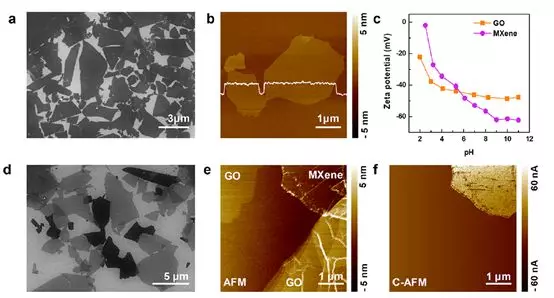
Figure 1. Physically characterized images of MXenes and graphene nanoplatelets.
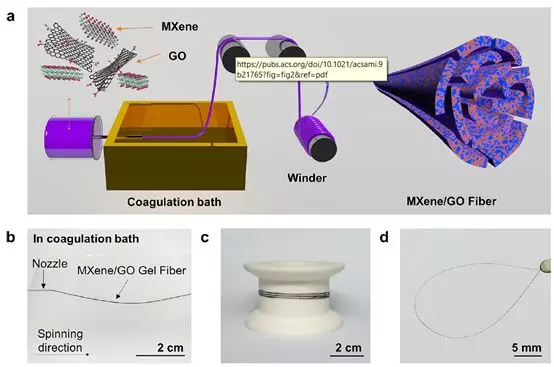
Figure 2. MXene / GO hybrid fiber preparation flow chart and physical diagram.
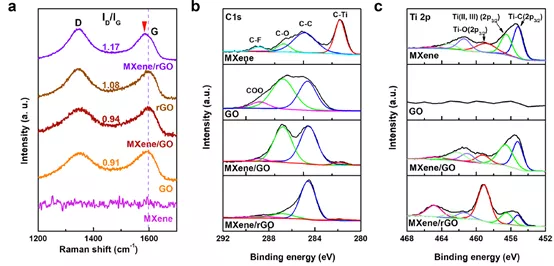
Figure 3. Raman and XPS characterization images of MXene, GO, MXene / GO, and MXene / rGO.
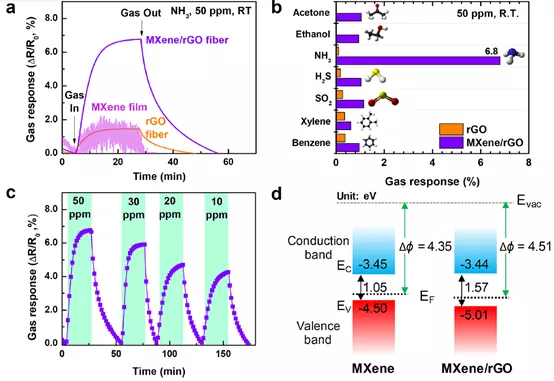
Figure 4. Characterization of gas sensing properties ofMXenefilm, rGO fiber, and MXene / rGO hybrid fiber.
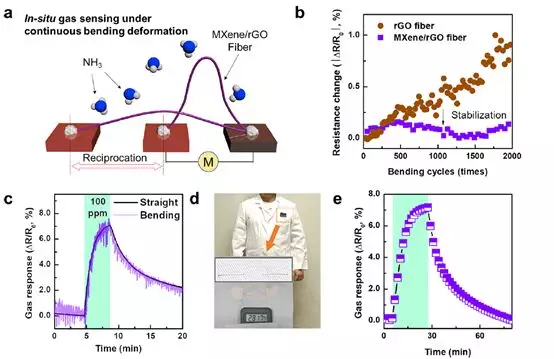
Figure 5. Performance of MXene / rGO hybrid fibers under different bends.
[Summary of this article]
In this paper, a reliable and effective binder-free wet-spun fiber process is developed to achieve layer-by-layer assembly of graphene oxide and layered Ti 3 C 2 T x MXene sheets. Due to the different reduction potentials of the two materials during the thermal reduction process, MXene / GO fibers transfer oxygen from GO to MXene through a simple current displacement reaction. MXene / rGO hybrid fiber has excellent mechanical durability, flexibility and chemical activity at room temperature, and can be used for flexible and wearable gas sensors. The optimized band gap, synergistic effect of MXene / rGO hybrid fiber and the increase of the atomic oxygen content at the MXene end significantly improve the NH 3 sensing response performance and low power consumption. The bending fatigue test of MXene / rGO hybrid fiber shows that the fold surface and small holes in the cross section are the main reasons for its flexible structure. The distortion noise at this time (¦¤R / R0 = ¡À 0.2%) is much smaller than the gas response, making it suitable for wearable devices. In addition, the extremely flexible MXene / rGO hybrid fiber was woven into a lab coat by a simple traditional weaving method, and showed reliable sensing capabilities. This new route in this paper provides a simple and scalable effective strategy for wet spinning of MXene / graphene hybrid fibers. Its application is not limited to wearable gas sensing, but also for various next-generation flexible and portable wearable energy devices It also has great appeal.
Literature link:
https://dx.doi.org/10.1021/acsami.9b21765.
Source: MXene Frontier

| Reminder: Beijing Beike New Material Technology Co., Ltd. supplies products only for scientific research, not for humans |
| All rights reserved © 2019 beijing beike new material Technology Co., Ltd ¾©ICP±¸16054715-2ºÅ |